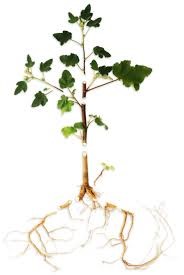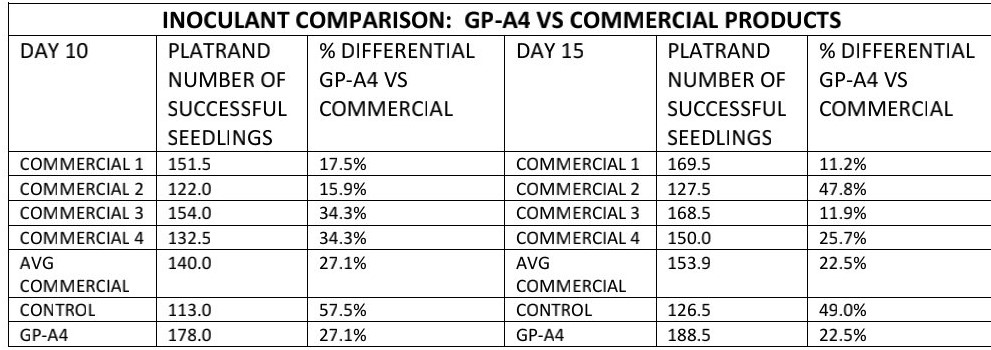GP-A4 seed inoculant and germination
GP-A4 is a liquid specially formulated and intended:
- To attain optimal seed germination.
- To clear seeds of fungi and protect radicle against fungal and nematode damage.
- To protect the root cap of the apical meristem against fungal damage to ensure effective cell differentiation.
- To ensure seedling resilience against abiotic stressors.
- To ensure optimal photosynthetic process of seedling-stage plants.
- To ensure continuous meristem activation.
ACTIVE INGREDIENTS
A special blend of Essential Oils, Chitosan, Tea Tree Oil, Vitamin E and Papain.
DIRECTIONS
GP-A4 can be applied through dipping of the seedlings roots before planting, spray, or dipping seeds. Select the appropriate inoculant according to specific needs. Add water only when needed. E.g. Peanut seed coats are known to be damaged by water and that inhibits germination. In this instance addition of water is not recommended.
In other instances, the inoculant can be diluted as 1 part inoculant to 15-part water.
Where clogging of seeds after dipping causes a problem, a light spray is recommended.
GP-A4 INOCULANT IN VEGETABLE FARMING
Especially in vegetable farming, much use is made of growing seedlings under controlled conditions. In most instances seedlings are transported in bare-root state. This method of transplantation leaves the seedling vulnerable to various conditions of shock. The most important of these are Transplant shock, Transplant root injury, growth delay due to adaption & re-establishment, UV shock and attacks from soil borne pests.
GP-A4 has been formulated to obviate or reduce these factors as best as possible.

GP-A4 BENEFITS
- Inoculation & pest control. The active ingredients of salicylic acid and Thymol are known inoculants and anti-pathogens. These apply to both nematode attacks to roots and fungal infections. The formula also contains essential lipids to help absorption of nutrients as well facilitate transport of these nutrients to all parts of the seedling.
- The inoculant will help prevent or reduce attacks by endo-nematodes of plant roots, and thus also reduce the destructive scourge of endo-nematodes as the plant grows.
- Transplant shock. Loss of seedlings are much reduced due to the protective layer formed around roots.
- UV Shock. Experiments at NWU showed superior recovery of treated plants to untreated plants after extreme fluorescence exposure in terms of both Photosystem 1 and 2. Where the seedling has been grown in a protected environment, the lipids will help with the adaption to the stronger UV environment.
- Transplant Root Injury. The strengthening of the roots and the ability to help reduce the recovery period underscore the benefits of GP-A4 as part of vegetable farming.
RESULT OF A FIELD TRIAL ON MAIZE
A comparative study was conducted to compare the GP-A4 with 4 commercial inoculants. The objective was to compare maize stand within a heavily nematode infested farm.
1